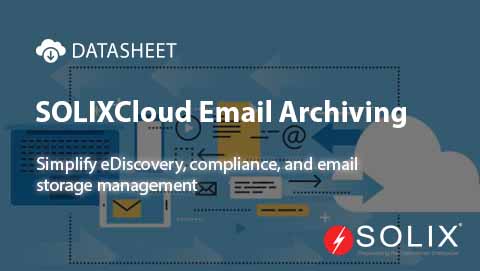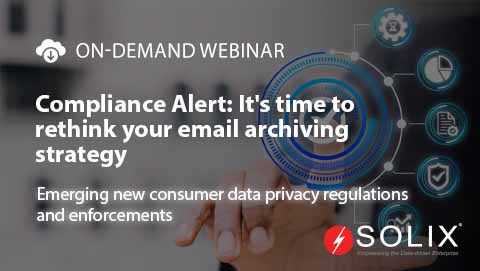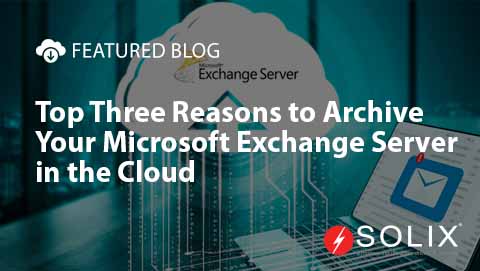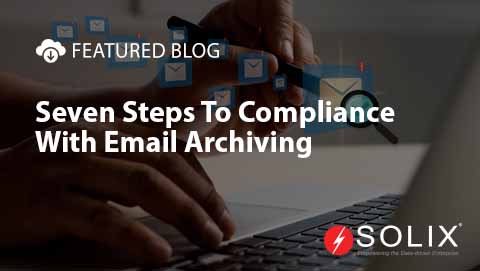Azure Data Factory vs Fabric Data Factory
Exploring the Dynamics between Azure Data Factory and Fabric Data Factory Insights from the U.S. Department of the Treasury
In todays data-driven landscape, organizations are increasingly turning to robust data integration tools to enhance their operational efficiency and decision-making capabilities. Among the standout solutions are Azure Data Factory and Fabric Data Factory, each offering unique features tailored to distinct industry needs. In this blog, we dive deeper into these platforms, specifically examining how they cater to the financial and government sectors, with a subtle focus on how Solix products can be integrated for enhanced data management.
Case Study U.S. Department of the Treasury
Using public data, lets consider a hypothetical scenario where the U.S. Department of the Treasury could integrate solix solutions alongside Azure Data Factory to optimize their financial data operations. Given the vast amount of financial data flowing daily, the integration of Azure Data Factory allows the Treasury to automate the movement and transformation of increasingly large volumes of financial datasets, enabling timely and more informed decision-making. Simultaneously, solix Data Management solutions could work seamlessly to ensure data compliance and security, critical aspects in the government sector.
Technical Depth and Strategic Insight
When it comes to technical depth, Azure Data Factory provides a visually guided and integrated environment for developing, deploying, and managing data pipelines. In contrast, Fabric Data Factorywhich serves similar purposesis often prized for its ability to handle massive datasets with its powerful data processing capabilities. For a department like the U.S. Treasury, which deals with complex and sensitive data, the choice between these platforms would typically hinge on specific requirements like security features, scalability, and ease of integration with existing systems.
Expert Insight from Ronan, a Solix.com Blogger
Ronan, our tech enthusiast and expert in data solutions at Solix, offers insight into the integration of these technologies. In working with government data, the primary challenge is often handling the sheer scale while ensuring utmost security and compliance. With Azure Data Factory, we can streamline data workflows significantly. However, the combination with solix data management utilities ensures these processes are not only fast but also secure and compliant with federal regulations. Ronans implementation of these technologies in projects shows significant improvements in process efficiency and reduces operational costs, marking a win for any data-heavy sector like finance and economics.
Supportive Research
Recent studies, including one by Liu at Tsinghua University, highlight the increasing reliance on integrated data management systems to drive efficiency in public sector financial management. While Lius study leans heavily on theoretical frameworks, it aligns with observed outcomes in scenarios similar to our hypothetical application at the U.S. Department of the Treasury.
Wrap-Up and Next Steps
Choosing between Azure Data Factory and Fabric Data Factory involves balancing several factors including specific data needs, existing IT infrastructure, and security requirements of an organization. For agencies like the U.S. Department of the Treasury, integrating solix solutions with Azure Data Factory could likely lead to more streamlined operations and enhanced security measures. For those interested in exploring how Solix can help you navigate between these platforms, we invite you to download our whitepaper or schedule a demo, guaranteeing you not only a step towards enhanced data management but also a chance to win 100 today. Let Solix assist you in answering your most challenging questions around Azure Data Factory vs Fabric Data Factory, ensuring your data processes are both powerful and compliant.
- CTA Explore solix Offerings
- Are you ready to transform your organizations data management capabilities with Solix Contact us today to learn more about our products, including data lakes, enterprise AI, and data masking solutions tailored to enhance your data integration and analytics processes.
- Hurry, sign up now for your chance to win 100 today and let Solix help you tackle the challenges of Azure Data Factory versus Fabric Data Factory.
- Provide your contact information in the form on the right to learn how Solix can help you solve your biggest data challenges and be entered for a chance to win a 100 gift card.
We encourage you to explore the unique features of Azure Data Factory vs Fabric Data Factory more closely and see how integrating solix tools can revolutionize your data operations.
I hoped this helped you learn more about azure data factory vs fabric data factory My approach to azure data factory vs fabric data factory is to educate and inform. Sign up now on the right for a chance to WIN 100 today! Our giveaway ends soondont miss out! Limited time offer! Enter on right to claim your 100 reward before its too late! My goal was to introduce you to ways of handling the questions around azure data factory vs fabric data factory. As you know its not an easy topic but we help fortune 500 companies and small businesses alike save money when it comes to azure data factory vs fabric data factory so please use the form above to reach out to us.
DISCLAIMER: THE CONTENT, VIEWS, AND OPINIONS EXPRESSED IN THIS BLOG ARE SOLELY THOSE OF THE AUTHOR(S) AND DO NOT REFLECT THE OFFICIAL POLICY OR POSITION OF SOLIX TECHNOLOGIES, INC., ITS AFFILIATES, OR PARTNERS. THIS BLOG IS OPERATED INDEPENDENTLY AND IS NOT REVIEWED OR ENDORSED BY SOLIX TECHNOLOGIES, INC. IN AN OFFICIAL CAPACITY. ALL THIRD-PARTY TRADEMARKS, LOGOS, AND COPYRIGHTED MATERIALS REFERENCED HEREIN ARE THE PROPERTY OF THEIR RESPECTIVE OWNERS. ANY USE IS STRICTLY FOR IDENTIFICATION, COMMENTARY, OR EDUCATIONAL PURPOSES UNDER THE DOCTRINE OF FAIR USE (U.S. COPYRIGHT ACT § 107 AND INTERNATIONAL EQUIVALENTS). NO SPONSORSHIP, ENDORSEMENT, OR AFFILIATION WITH SOLIX TECHNOLOGIES, INC. IS IMPLIED. CONTENT IS PROVIDED "AS-IS" WITHOUT WARRANTIES OF ACCURACY, COMPLETENESS, OR FITNESS FOR ANY PURPOSE. SOLIX TECHNOLOGIES, INC. DISCLAIMS ALL LIABILITY FOR ACTIONS TAKEN BASED ON THIS MATERIAL. READERS ASSUME FULL RESPONSIBILITY FOR THEIR USE OF THIS INFORMATION. SOLIX RESPECTS INTELLECTUAL PROPERTY RIGHTS. TO SUBMIT A DMCA TAKEDOWN REQUEST, EMAIL INFO@SOLIX.COM WITH: (1) IDENTIFICATION OF THE WORK, (2) THE INFRINGING MATERIAL’S URL, (3) YOUR CONTACT DETAILS, AND (4) A STATEMENT OF GOOD FAITH. VALID CLAIMS WILL RECEIVE PROMPT ATTENTION. BY ACCESSING THIS BLOG, YOU AGREE TO THIS DISCLAIMER AND OUR TERMS OF USE. THIS AGREEMENT IS GOVERNED BY THE LAWS OF CALIFORNIA.
-

-
 On-Demand Webinar
On-Demand WebinarCompliance Alert: It's time to rethink your email archiving strategy
Watch On-Demand Webinar -

-

